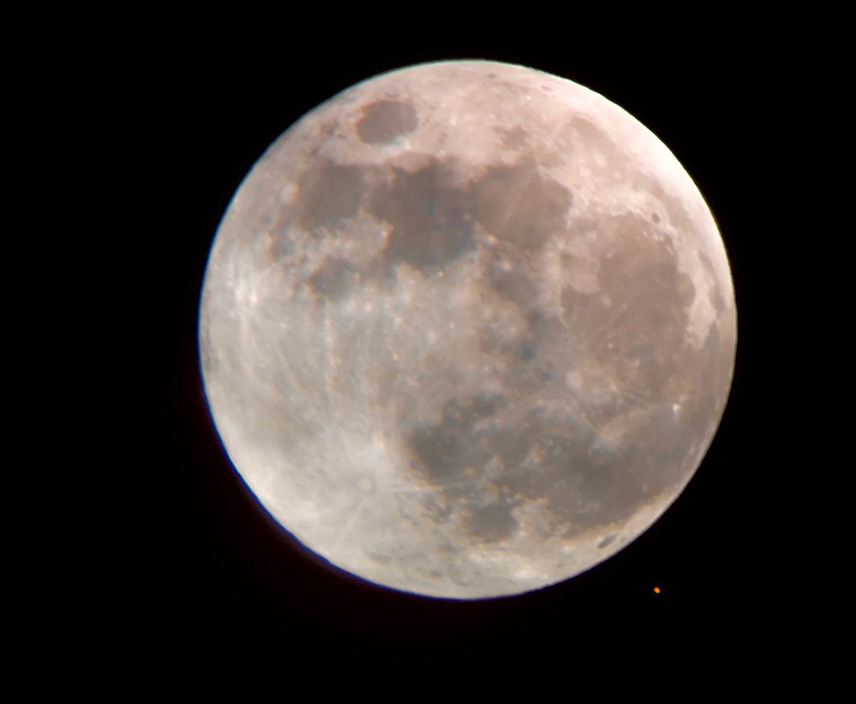Science Snippet:
Explore Mars

Anyone who completed my astronomy challenge last year should remember Mars as a brilliant red “star”. But if you try to find Mars now, it won’t look the same; it is over six times dimmer than it was in December. Mars is not very large. It is only about half the size of Earth. This means that the distance between Mars and Earth is a large factor in how bright Mars will appear.
Mars becomes brighter and dimmer in a very complicated way. Mars is at its brightest when Earth is directly between Mars and the Sun. This position is called opposition. An opposition occurs every 26 months. Last December Mars was at opposition. This won’t happen again until January 2025. In 2025, Mars won’t be as bright as in December 2022, since oppositions of Mars have a cycle of their own. The distance to Mars at opposition ranges from around 35 million miles to around 63 million miles. Every 15 or 17 years, an opposition of Mars occurs when Mars is especially close to Earth. The last of these very bright oppositions was in 2018. The next few oppositions after that will be progressively dimmer. The opposition in 2027 will be only about a third as bright as the one last year. But after that, oppositions will become progressively brighter until they peak again in 2035.
On average, Mars is the second closest planet to Earth. If Venus is far away from Earth while Mars is at opposition, Mars can be the closest planet to Earth for a time. Right now, however, Mars is over 206 million miles away. This is approaching the furthest it can ever be from Earth. Even if we walked across every mile of the Earth’s surface (including oceans and land) we would not have covered 206 million miles. But we would be close. We would only need to walk another nine million miles. You would have to cover some of the distance again. Walking up and down every mile of North America would give you almost exactly the distance you would need.
Even though it is currently dimmer than it was in December, Mars is still easily visible in the evening sky about 45 minutes after sunset. In the West, Venus should appear as an extremely bright “star”. Look to Venus’ upper left for a much dimmer red “star” which is Mars. Mars may not appear very red. People tend to see the colors in planets and stars differently. Besides that, Mars itself can look more or less red on different nights. The distance between Venus and Mars in the sky will increase as the month continues. By the end of July, Venus and Mars won’t be visible at the same time. Both planets won’t be visible at all by the beginning of August.
Venus isn’t the only bright object that will be near Mars this month. On July 9 and 10, Mars will pass quite close to the bright star Regulus. Although they will look close in the sky, Regulus is much further away. The distance to Mars seems insignificant compared to the hundreds of trillions of miles that Regulus lies from Earth. On the 20th a thin crescent moon will appear fairly close to Mars. Both of them will be quite low in the western sky. If you have a clear view of the western horizon, you may still be able to see Venus shining even closer to the horizon.
If you watch the planets over a long time period, you will notice that they move in relation to the stars. In our sky, they slowly move from west to east, from one constellation into another along the zodiac. Occasionally, however, some of the planets seem to briefly move in the opposite direction. This is especially noticeable with Mars. Why would Mars occasionally move west? Earth moves faster than Mars. (This is because Earth is closer to the sun.) If you are driving on a highway you will notice that the landscape appears to move backward around you. We can see the same optical illusion at work when Mars seems to move backward. This backward motion only appears at opposition. It happens at opposition because this is the time in our orbit that we are passing Mars as we move between it and the sun. So if you carefully observe the position of Mars in 2025, you will see an optical illusion on a cosmic scale.
